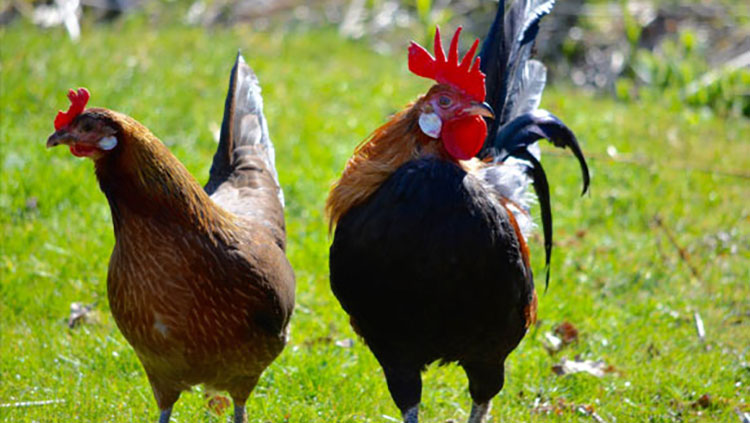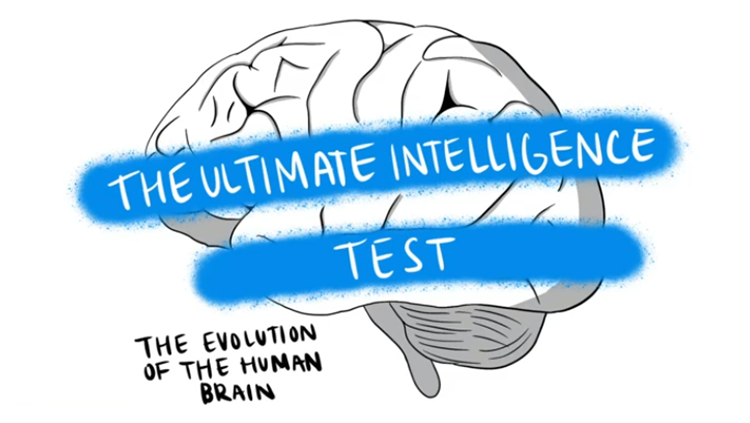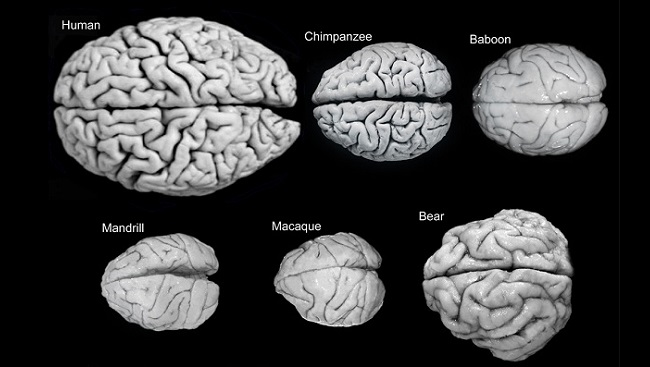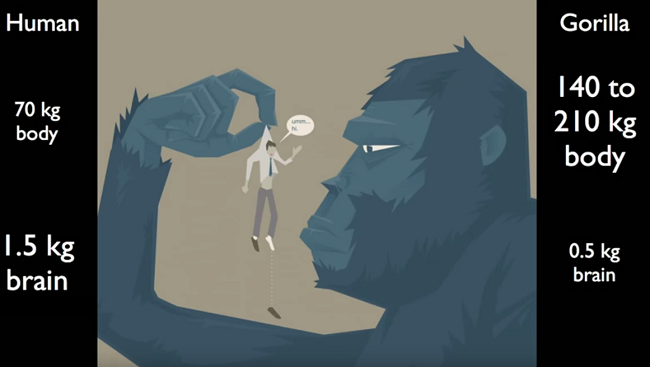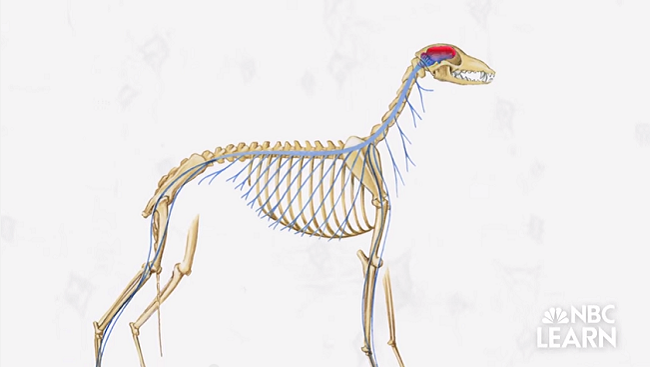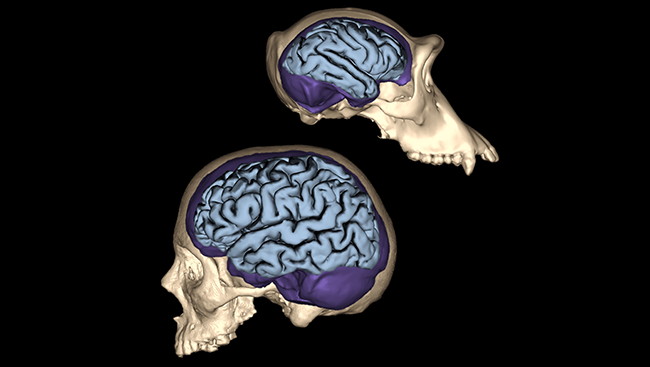Is there anything that we could call human nature, some sort of basic set of characteristics that humans share, independently from their specific cultures? How important is that part of us and what is it exactly?
Last week I watched a Dutch debate from 1971 between Michel Foucault and Noam Chomsky. It is quite humbling to see such visionary thinkers lay out, more than 40 years ago, questions that have shaped our scientific landscape for the past decades and that are still at the heart of on-going research in the humanities and science. To my American friends who are wondering if it's worth learning french, I suggest this: even if it was just to be able to understand a couple of debates like this one in their original form, it would be entirely worth the effort.
The first question they explore is whether there is such a thing as human nature, or if our behaviors and attitudes are determined by the environment. Chomsky points to the fact that the language and religion in which we are raised are indeed environmental influences. But, he adds, we may call human nature our very ability to learn those influences by interacting with others. Foucault is skeptical: even if there was such a thing as human nature, by trying to characterize it using the tools of science, wouldn't we run the risk of introducing some biases from our culture and scientific method as we define it?
Humans are evasive creatures, hard to classify into any of the categories that scientists and philosophers have concocted over centuries: good, bad, violent, peaceful, bayesian learner, reinforcement learner, creative, lazy, submissive, dominant. If anything, the ability to seamlessly alternate between all of these seems like a good place to start defining us.
Identifying the causes underlying our personality and behaviors seems such a persistent target of almost all areas of human inquiry that I wonder if any problem is more important. Psychologists sometimes discuss this in terms of the nature versus nurture debate. In its simplest form, it asks what parts of our selves are determined by our genes and what parts can be attributed to the environment in which we grow up. In philosophy, criminology and politics the question has major implications, from defining what we mean by free will to making social choices such as deciding which individuals ought to be punished by law and which should be declared irresponsible for their actions.
The subject is so important to society that it is hard to even talk about scientific facts in this domain, as our very investigation of these questions are submitted to ideological pressures from every part of the political spectrum. These pressures have reached the point where scientists stating simple facts about how genes, biology and behaviors relate to each other are accused of promoting ideas that are dangerous to society. The people expressing those concerns tend to confound what is and what ought to be and think that any statement on what is has to be fought for what they think it might lead to.
I would like to tell you what I think of these questions, but first I need to introduce the concept of behavioral adaptation, and to do so I will use an example: flounders.
Flounders have a fascinating behavior: they can change color to match the surface on which they are lying. As you can see in this video, they can create fairly complex color patterns on their skin in order to meld with the background. Chameleons can also change color but do so for a variety of reasons, possibly including communication. In the case of flounders, it is believed that the color changes really serve as camouflage. It is easy to imagine how evolution could have led to the selection of such a spectacular behavior.
Flounders are faced with predation from bigger fishes and birds and are also predators themselves. There are many strategies that might have evolved to allow flounders to hide from predators and preys. I could think of a whole population of flounders with a fixed appearance that would suit one particular seabed. Such hypothetical animal could avoid other types of seabed and stay on the one that resembles its skin most. This is basically the strategy that has evolved in many animals with a fixed appearance for camouflage, like moths. But imagine the advantage that it might procure if some flounders were able to navigate using any type of surface to rest and hide. Imagine how much more efficient it would be in order to escape predators, gather food or rest. The costs associated with staying only on one of the seabed types would vanish, with little compromise on the risk of predation. A new range of behaviors would suddenly become available. Given that color changing is observed throughout the population in species of flounders and other animals such as cuttlefish, it appears reasonable to think that such evolutionary pressures as those I just described were important enough to drive the conservation of this amazing ability.
There are two important ideas to retain from this example
1. Sometimes, certain behaviors or physical traits provide an advantage to an animal. If this trait enhances the ability of the animal to survive or reproduce, we can call it an adaptation. This is basic evolutionary biology.
2. An adaptation does not have to be fixed. Precisely, the adaptation may consist in making the trait adaptable. This can include a series of mechanisms by which the behavior is triggered at the right moment, at the right place, given the right sensory stimulus. Almost all behaviors produced by the brain are somewhat adaptable. You don't (or rarely) see a dog barking at no one, a cat chewing air, or a person talking aloud when no one is around. This means that in some way each of those behaviors are not just produced randomly by the brain but rather produced in certain specific circumstances. It also means that the brain possesses the machinery to select the "right" moments to trigger them.
Ultimately, our brain can be seen as an adaptation (1) that contributes to making our behaviors adaptable (2). Sometimes, I have the impression that trying to define human nature is a little bit like asking which color is the flounder's skin. Not that the question is invalid, but it fails to reflect the complexity of the possible answer.
Under what circumstances are traits like the color changing of flounders, traits that are adaptable, selected during evolution? There may be multiple answers but here is at least one possibility. One context that may drive the evolution of such adaptable behaviors is one where the trait increases fitness in certain situations, and decreases fitness in others. When you think about it, the brown color is good when the flounder rests on brown seabed, but it is a handicap when resting on any other color of seabed.
Now keeping that in mind, let's look at how science studies behaviors. Imagine you are a scientist studying flounders in an aquarium that contains only brown seabed. You might never discover that flounders are capable of switching color. Here the environment you use to study the animal will limit your understanding of its behavioral abilities. Imagine you were now studying them in an empty aquarium with no seabed. You might see them changing color once in a while with no apparent reason. Consequently, you would start thinking that flounders have color-changing abilities but you would be missing the fact that they can do so according to background. Somehow, understanding the ability that flounders possess requires a complex-enough aquarium, one that reproduces important aspects of the environment that are relevant to trigger the behavior, one with many seabed colors. Foucault was right at least in that the experimental contexts we choose to understand animal and human behavior will have an impact on our scientific theory.
Humans are what they are due to biological evolution. Unlike flounders however, melding with the seabed was not a primary concern for primates. Likewise, predation from birds and large fishes was not a major problem for our large-enough, terrestrial ancestors. Living in groups, the concerns that we had were probably much more abstract. We had to interact with strategic individuals: family members, group members, and other groups of primates to cooperate in exploiting our environment and sometimes compete to get the best out of it.
Like flounders who became experts at traveling on seabed surfaces, we became experts at maneuvering through the social space. Like flounders who turn white or blue according to background, we can turn kind or violent on different social backgrounds. Our behaviors, our emotions and our attitudes are, like the colors of flounders, adaptable. We can turn defensive, aggressive, or emotional in some situations and not in others. Unlike what some might think, this does not mean that our behaviors are not the product of our genes and biology. What it means is that our genes are related to our behaviors through an intermediary step, that of the brain and its development. Our genes produce proteins and organize our cells into adaptable devices, and those devices are made in such a way as to produce behaviors at given times, in given circumstances, in reaction to certain environments. Confronted with the scientific fact of adaptability and variability in human behavior, we have to adopt the same reaction that scientists would have in front of the ability of flounders to change color. We have to see the overall pattern and acknowledge its complexity. Flounders have evolved the ability to change color because accessing all surfaces of the seabed safely was important enough to procure a competitive advantage against other fishes who did not have this ability. Where some people see just so stories or cultural explanations for the variability of animal and human behavior and how it can be determined by environment, I think there is place for a more complex and embedding theory, one that includes the possibility that some of these variable responses to environments may have their roots in our evolutionary history. Like flounders who had advantages in accessing various seabed surfaces, we probably had advantages in navigating various social surfaces, from friendly to aggressive ones. The purple skin of flounders was sometimes an advantage, but it was also sometimes a handicap allowing predators to spot the fish better. Similarly, our kindness and our generosity were sometimes advantageous and sometimes a handicap that our competitors would exploit. In both cases, the result was the evolution of highly flexible and environment-dependent behaviors.
Perhaps there is, among the possible colors that flounders can adopt, some unknown color, yet to be discovered by science. Perhaps flounders can turn bright pink and we just don't know it because we have not yet tried to raise flounders in pink aquariums. Our knowledge of human nature is, likewise, limited to the aquariums in which we have studied the creature. It may be that humans have not showed us all the colors they can take yet, simply because we did not try all possible aquariums, all possible societies. That is also one of the reasons why I think social sciences like sociology, despite their tendency to undertake ideologically-driven research programs and the weak methods that they sometimes employ, might have a legitimate role in our understanding of human nature. Although a biological and neuroethological perspective on human behavior will likely be the most informative, social sciences can describe the structure of the society in which we observe those behaviors. To pursue the metaphor, social sciences can point to the details of the aquarium that we live in and its potential limits in revealing or hiding certain human traits.
Psychology has a long journey ahead. The link between the color changes of the flounder and its environment is rather simple. When the environment is purple, the flounder makes its best to become purple. When it's brown, it makes its best to become brown. The links between environment and behavior in humans are more tortuous. They have been and will continue to be revealed by research in neuroscience, psychology and sociology. Meanwhile, neuroscience has an even more difficult path ahead. We still know very little even about how flounders can succeed at capturing the color and structure of their environment so quickly and how they can use this information to change appearance. Perhaps understanding the biological mechanisms underlying this behavior is a realistic target for the next decades.
Then, human nature. Maybe.
Some further readings that have inspired this post.
The Better Angels of Our Nature: Why Violence Has Declined, Steven Pinker (2012).
The Structure of Evolutionary Theory, Stephen Jay Gould (2002).
Animal Signals, John Maynard Smith and David Harper (2004).
The Selfish Gene, 30th anniversary edition, Richard Dawkins (2006).
The Folly of Fools: The Logic of Deceit and Self-Deception in Human Life, Robert Trivers (2012).
And, as noted by John Kubie in the comments Sociobiology: The new synthesis, Edward O. Wilson (1975).
CONTENT PROVIDED BY
BrainFacts/SfN
Also In Evolution
Trending
Popular articles on BrainFacts.org


